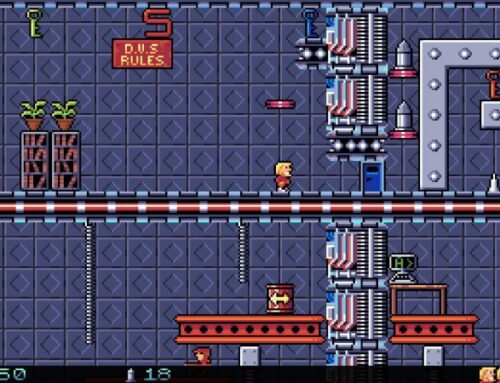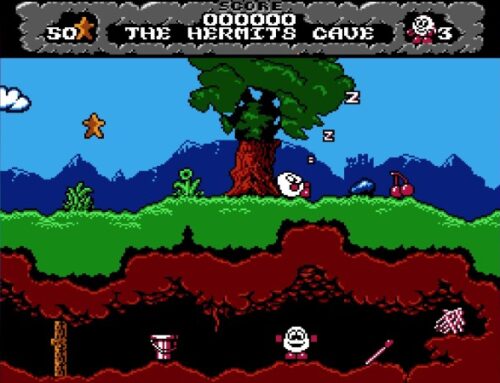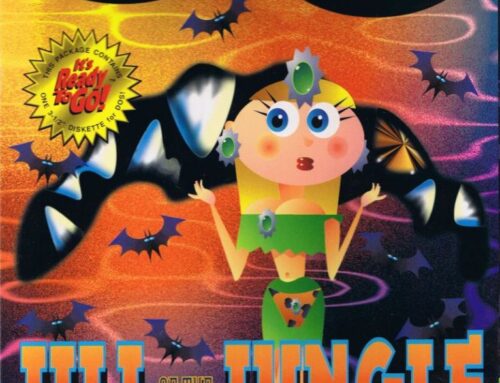Whenever you see retrospectives on NES games, it’s always the same names that come up: Super Mario Bros. 3, The Legend of Zelda, Metroid, Castlevania… you know the drill. These games are popular and well-regarded with good reason — but there’s a ton of other interesting stuff on the platform. Today I’d like to talk about CodeMasters’ titles.
CodeMasters’ titles are sometimes treated as a bit of a joke by some people, largely because they’re one of several groups who attempted to get around Nintendo’s rather strict licensing rules by developing their own cartridge technology.

Initially, this was achieved through the use of “plug-through” cartridges that you’d need to plug a “proper” NES cartridge into in order to fool the NES’ 10NES lockout chip, but subsequently the company included a switch on their cartridges that would essentially crash the chip and allow it to be bypassed altogether.
Neither of these solutions were ideal. Their follow-up technology, the Aladdin Deck Enhancer — which essentially incorporated all the guts of a “real” NES cartridge aside from the actual ROM containing the game — wasn’t great either, but at least it provided an interesting way around the problem.
And on top of that, the fact that the expensive parts of the cartridge were in the Aladdin rather than the main cart itself allowed CodeMasters to put out their NES games at a significantly reduced price — a solid choice, since prior to moving into the NES market, the company had made a name for itself with its budget-priced but good quality home computer software.
Eventually, with the entirely predictable failure of the Aladdin Deck Enhancer, CodeMasters released (or, in some cases, rereleased) a lot of their games in Europe on more conventional NES cartridges, albeit ones that looked a bit different from official releases.

With all that in mind, it’s perhaps understandable why some people have never got into exploring CodeMasters’ NES releases, since it’s a bit of a complicated minefield to determine which version you should get for which variant on the NES. In these days of emulation, however, it’s a much more straightforward process — and if you want to assuage any sort of guilt about playing these games on something over than original NES hardware, you can pick up the Oliver Twins Collection and CodeMasters Collection cartridges for the Evercade and enjoy them to your heart’s content.
More to the point, you absolutely should check out CodeMasters’ NES output, since they made a bunch of really good stuff that, while occasionally a bit rough around the edges, definitely still holds up very well today — particularly if you’re a fan of interesting takes on classic arcade game formulae.
One thing the developers who worked under the CodeMasters umbrella were really good at was taking the format of an existing game and making a version that played just a little bit differently — enough to make it feel like a distinct game rather than a simple, cynical clone.

A good example of this is Go! Dizzy Go!, which was originally released on the NES in 1992 as part of the Quattro Arcade compilation. It’s actually a development of a slightly earlier game for home computers called Kwik Snax, which in turn is perhaps best looked at as a combination of Sega’s classic Pengo and Tecmo’s Bomb Jack. Unfolding from a top-down perspective, you’re tasked with collecting all the items on the screen — with more points on offer if you collect them all in the order that they start flashing — and, at the same time, are able to fend off enemies by pushing blocks around.
Go! Dizzy Go!’s inspirations are obvious to anyone familiar with ’80s arcade games, but it never feels like a gratuitous ripoff. It’s obvious that care and attention has been lavished on the product, since it features good quality visuals and excellent music. Really excellent music — which was a bit of a running theme for CodeMasters games, thanks to their frequent partnership with talented composers such as Gavin Raeburn (who is now the development director of Forza Horizon’s development studio Playground Games), Lyndon Sharp (who doesn’t appear to have done much in the industry since about 2002 or so) and Allister Brimble (who has continued to be exceedingly prolific ever since).
Many of CodeMasters’ NES games actually have quite a distinctive sound to them in that the audible waveforms their composers use as “instruments” in their pieces of music are consistently much more varied and interesting than those heard in a lot of other NES titles. To put it another way, they often sound more like Commodore 64 compositions than what you’d typically hear coming out of the NES — and yes, that absolutely is a compliment.

One of the best things about CodeMasters’ NES output is that they never allowed themselves to get stuck following a single formula.
While the company’s work from the era is perhaps best known for the Oliver Twins’ Dizzy series of arcade adventures, titles such as Big Nose the Caveman (an Adventure Island-style side-scroller), Big Nose Freaks Out (a speedy, physics-heavy platformer clearly inspired somewhat by Sonic the Hedgehog), FireHawk (a top-down tactical shoot ’em up), F-16 Renegade (a top-down shooter with occasional Space Harrier-style quasi-3D segments), MiG-29 Soviet Fighter (a Space Harrier-style quasi-3D shooter with occasional top-down segments) and The Ultimate Stuntman (a mashup of Spy Hunter, Contra and various other arcade classics) demonstrate how varied their output really was.
In other words, there’s a wealth of underappreciated games among CodeMasters’ output for the NES in the early ’90s — and if you’re an NES fan who is yet to check it out, it’s well worth doing do. You might just find yourself discovering a few new favourites along the way!




